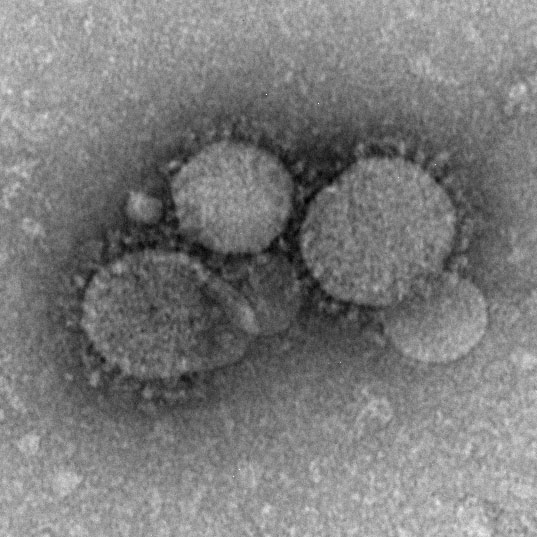The
notion that prediction is difficult, especially about the future, is absolutely true in the domain of infectious disease. Despite the difficulty we must try, and I think there's reason for hope, given recent studies utilizing powerful
machine learning techniques and diverse data. There's much innovation being brought to the issue.
Recently, a topic I've written about in the past has appeared in the news: Forecasting of
Rift Valley fever (RVF) in East Central Africa. Bernard Bett has written a
thoughtful piece on the PLoS Translational Global Health
blog, which I recommend reading, examining the gamut of public health tools and responses needed in order to combat RVF. He begins by framing the issue succinctly,
Recent climate predictions suggest East Africa may be in line for an epidemic of Rift Valley fever -- an infectious disease which can hit people, their livestock and livelihoods, and national economies hard. Data from the Climate Prediction Centre and the International Research Institute for Climate and Society suggest there is a 99.9% chance there will be an El Niño occurrence this year, with a 90% chance it will last until March/April 2016. At least two of the most recent Rift Valley fever epidemics in East Africa -- those in 1997/98 and 2006/2007 -- were associated with El Niño weather patterns, with Kenya suffering losses amounting to US$32 million in the most recent. Given the strong predictions of an El Niño occurrence, and the established association between El Niño and Rift Valley fever risk, countries in the Horn of Africa need to start laying out measures to manage the developing risk. . .
The
health,
economic, and social costs of this disease are well known and there is a wealth of research establishing both RVF epidemiology and its strong ties to
climate (including
El Niño) and the environment. Nonetheless, there was little early response undertaken given remotely sensed (i.e.,
satellite-based) RVF forecasting in 2006-07. Peter Roeder described the situation in a 2007
ProMED post (archive 20070112.0164),
It is interesting, if rather disheartening, to watch another RVF epizootic emerge and evolve in eastern Africa and to note that it is such a close recapitulation of events that occurred in 1997/8 and decades before. It is a recapitulation not only with respect to disease evolution but also in terms of national and international preparedness—or lack of it. Those who followed ProMED in those days will be aware that the epizootic attracted intense international attention and was closely reported in postings, which contain much useful information. Despite seminal work on developing early warning systems based on remote sensing . . . it seems that the capacity to respond has not improved greatly in the high-risk countries in Africa.
We are presently seeing the emergence of a very powerful El Niño, possibly one of the strongest in the historical record, and this was forecast in
mid-August of this year. While such a climate forecast, especially when combined with other data, could reasonably be interpreted as a 2-3 month warning of the potential for RVF in parts of Africa, it's important to appreciate the complexity of acting on such information. As I
wrote in 2012,
A recent, comprehensive set of case studies of the 2006–2007 outbreak in East Central Africa was published in the American Journal of Tropical Medicine and Hygiene (August 2010), and many of the nuances are described there. For example, current preparations of the Smithburn vaccine have a shelf life of approximately 4 years. Outbreaks in the Horn of Africa region occur aperiodically, with a mean of near 10 years between outbreaks. Veterinary health authorities cannot spend scarce resources on continually replenishing a stock of RVF vaccine when other needs are present continuously. Nor can manufactures maintain large stocks that are likely to expire before sale. Thus, vaccine may not be available at any given time. Nonetheless, waiting until there is a need to manufacture vaccine is problematic.
In other words, although vaccination is a powerful strategy for protecting against RVF virus transmission, maintaining vaccine stocks isn't straightforward. Moreover, simply having vaccine available isn't enough: Effective and safe administration triggered by any early warning, such as the one described in the
impressive study of Anyamba et al in 2009, is complicated. In the case of the 2006-07 outbreak, for example, by the time a warning was issued, early outbreak areas were already inundated by rains, making travel and delivery of supplies difficult. In fact, in some scenarios it may take
up to 150 days from a RVF vaccine order until the successful acquisition of vaccine-associated herd immunity -- much greater than the few weeks of advanced warning the state of the art can current supply. (Note: There's a distinction between a
statistical forecast for a specific disease and simply noting that
the strongest El Nino in decades is going to mess with everything.)
If a disease forecast is to have impact,
many factors must come into alignment, including the forecast supplying sufficient lead time, decisionmakers having enough confidence in the forecast to act, and the existence of a public health infrastructure capable of supporting an effective (and potentially complex) response. These are important issues to keep in mind when thinking about surveillance and early warning, regardless of the disease and setting.
(image source: Wikipedia)
 Jessica Ericson and co-workers recently published a
remarkable investigation of invasive Staphylococcus aureus infection in hospitalized
infants. In it they describe a retrospective multicenter study of 348 NICUs in which a group of 3888 infants
suffered invasive S. aureus infection between 1997 and 2012. They
compare the demographics and mortality of infants with invasive MRSA
and MSSA; determine the relative annual proportions of MSSA and MRSA;
and calculate the risk of death after an invasive MSSA and MRSA
infection. It's a fascinating study and I recommend reading it.
Jessica Ericson and co-workers recently published a
remarkable investigation of invasive Staphylococcus aureus infection in hospitalized
infants. In it they describe a retrospective multicenter study of 348 NICUs in which a group of 3888 infants
suffered invasive S. aureus infection between 1997 and 2012. They
compare the demographics and mortality of infants with invasive MRSA
and MSSA; determine the relative annual proportions of MSSA and MRSA;
and calculate the risk of death after an invasive MSSA and MRSA
infection. It's a fascinating study and I recommend reading it.






